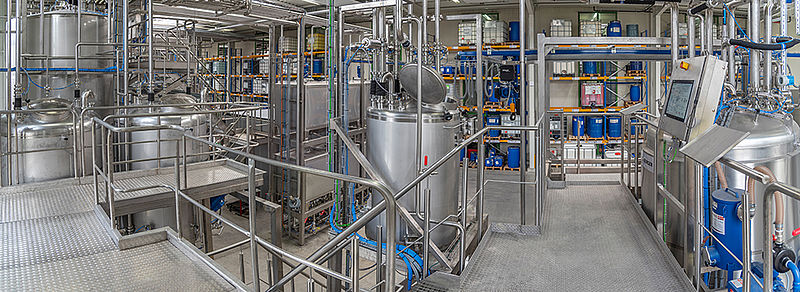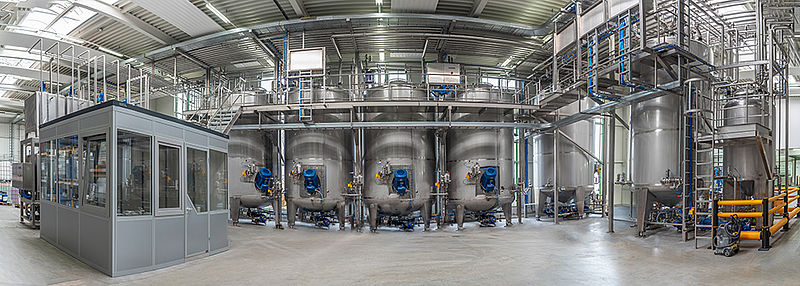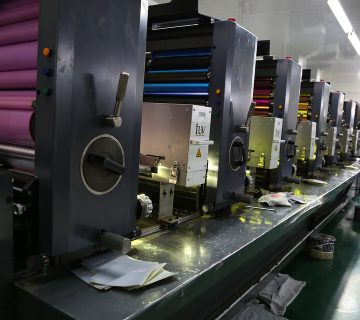This blog post aims to provide a complete answer to this basic question, “What are waterborne coatings?”.
Waterborne coating is a broad term applied to describe any surface cover or finish that relies on water as its solvent to disperse the resin added to it to make the coating. Composition differs from one coat to another and may include as much as 80% water with small amounts of other solvents such as glycol ethers. High water percentage in waterborne coats make them both environmentally friendly and easy to apply.
What Makes A Water-Base Coating Different?
Waterborne finishes are very similar to their solvent–based counterparts with regard to curing mechanism, polymer structure, and film integrity. In addition, chemical composition is also the same as water plays a similar part in the production of waterborne finishes as that played by such thinners as mineral spirits or Toluol, in solvent–based finishes.

Applications of Water-Base Coating
Waterborne finishes have a wide variety of industrial applications including automobiles, concrete, furniture, plastic, wood, and even printing inks, and are compatible with conventional as well as electrostatic application equipment.
Resin types with waterborne finishes cover a wide range including acrylic, alkyd, epoxy, fluoropolymer, polyester, urethane, and waterborne powder. Similarly, they function under a variety of curing chemistries, including air dry thermoplastic, aminoplast, epoxy–polyamide, oxidative, urethane, and UV cure.
Primary Categories of Waterborne Coats
Coatings known as waterborne fall under three primary categories: water–soluble or water–reducible, water–dispersible or colloidal, and emulsion or latex.
Water–Soluble
Water–soluble refers to coatings in which individual molecules of resins fully dissolve in water. Water–soluble coatings are produced in an organic medium through a process of polycondensation or polymerization reaction; accordingly, these typically contain organic co–solvents such as alcohol or glycol ethers. This type of coat is made up of merely 30–40% solid material by weight, and most baked coatings fall under this class.
Water–Dispersable
Water–dispersable refers to resins first made in solvent and later reduced in water resulting in small particles of insoluble resin dispersed in water. This type of waterborne coating also involves the use of organic solvents as coalescing agents, but these are in small quantities that evaporate at the time of drying. Colloidal dispersions are basically used for application on porous material such as leather or paper.
Emulsion
Emulsions (more commonly known as latex) are not different from water–dispersible coatings. Resin particles in emulsions tend to cluster in larger groups and require the presence of an emulsifier to suspend throughout the water base. Emulsions are more permeable than other waterborne coatings. This feature lets them “breathe” and decreases the likelihood of blistering or peeling. Architectural coatings such as interior and exterior paints belong to this category.

The Advantages
A number of features of waterborne coatings ensure that they do not pose any danger to the environment. These coatings comply with the US and European regulations governing VOC (volatile organic compound) emissions, as their production of VOC content is merely less than 3.5 pounds per gallon.
Apart from their low level of toxicity, their high water percentage also makes waterborne coatings less flammable and leads to decrease in or elimination of hazardous waste disposal. Containers and paint guns used during the application of waterborne coatings can be easily cleaned with water or water–based cleaners disposing of the need for such cleaners as acetone, methyl acetate, or paint thinner.
Another benefit of waterborne coatings over their solvent–based counterparts is the relatively lower cost of production since they do not require additives, hardeners, or thinners. Less product can cover more surface area with waterborne coatings in comparison with solvent–based coatings, and they are the better choice than solvent–based finishes for applications in which there is a possibility of reaction with existing material or finishes.
Waterborne coatings provide excellent surface properties such as anti–sealing effects and non–yellowing film, high gloss, and rub resistance. Due to their resistance to heat and abrasion, waterborne coatings make excellent primers. They create strong adhesion, can be applied in thick or thin coats, and allow for easy color blending and change.
Today, waterborne coats constitute the largest category of coating or finish technology employed globally. Estimates forecast that their global market share will rise to more than $146 billion USD by 2022. A driving force behind this predicted growth is the increase in both construction and automotive industries that utilize acrylic finishes. Acrylic coatings account for more than 80% of the market for waterborne coatings.
Another factor enhancing the market growth is the state regulatory support for these eco–friendly products. Government regulations on VOC and other emissions may be a key factor in Asia and the Pacific, where demand for waterborne finishes is consistently on the rise.
Some market analyses suggest a split in analytics between architectural and industrial sectors. Technology around waterborne coatings in both market sectors has tremendously improved with the trend in environmentally–friendly building materials and methods. For decades, waterborne technologies have reigned the architectural market. Conversely, the industrial market has continued to demand and develop alternative solvent–based technologies to meet a wider range of performance standards. Waterborne coatings represent a versatile, high quality, and environmentally–sound choice for a variety of finish applications.








No comment